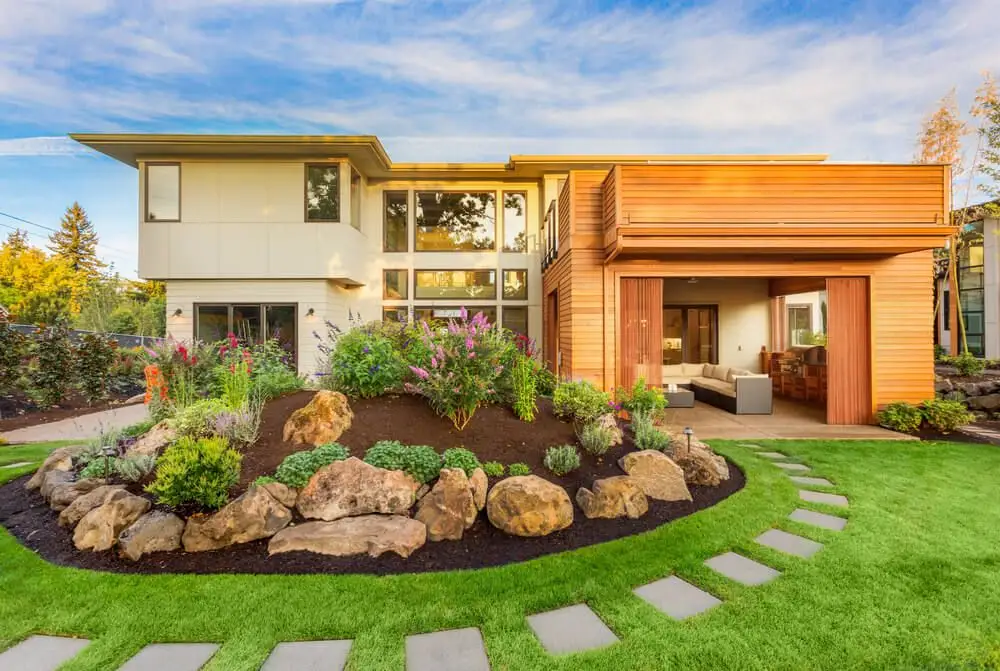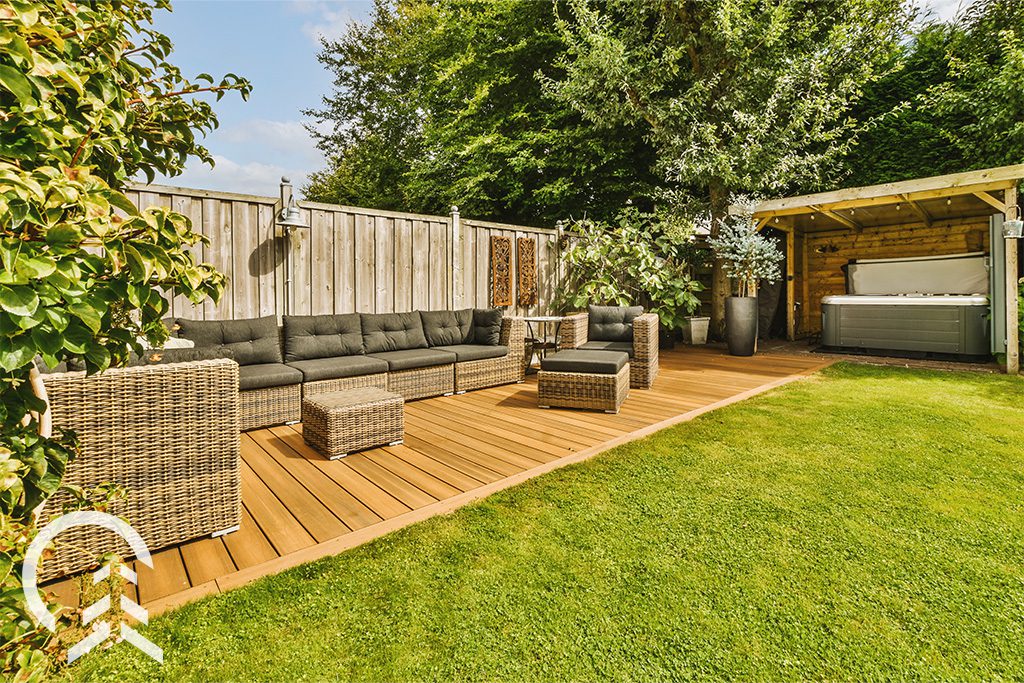Change Your Garden With Innovative Landscape Design Concepts and Techniques
Transforming a yard calls for thoughtful consideration of its special qualities. Reliable landscape Design can boost both functionality and aesthetic allure. By discovering various techniques, one can develop a space that not just shows individual design however likewise supports regional biodiversity. As the journey unfolds, inquiries concerning plant format, option, and sustainability arise, motivating a deeper expedition into exactly how to make these concepts come to life.
Assessing Your Outdoor Space: Recognizing Your Yard's Possible
Examining exterior space is necessary for effective landscape style. Comprehending the special features of a garden permits developers to optimize its capacity. Factors such as dirt top quality, sunshine direct exposure, and existing frameworks play an important function in determining what can be accomplished. Evaluating the topography aids determine locations for growing, paths, or water features, while keeping in mind drain patterns guarantees that plants grow without waterlogging.
Acknowledging the garden's microclimates can influence plant choice and placement. Observing just how the room is used by homeowners informs functional Design options, such as seating locations or play zones. Additionally, considering the surrounding atmosphere and bordering landscapes can provide ideas and context for Design choices. By extensively analyzing these elements, one can develop a cohesive and welcoming outside space that reflects the proprietor's vision while harmonizing with nature. Eventually, a comprehensive evaluation prepares for an effective landscape Design project.
Picking the Right Plants: A Guide to Shade, Appearance, and Seasonal Passion
When selecting plants for a landscape layout, recognizing the interaction of color, appearance, and seasonal interest is necessary for developing a lively and dynamic garden. Shade can stimulate feelings and established the tone for the room; consequently, choosing an unified palette enhances visual charm. Warm tones like reds and oranges produce power, while cooler shades like blues and greens use serenity.
Appearance includes deepness and dimension, permitting for a mix of vegetation sizes and shapes. Integrating fine-textured plants with bold-leaved varieties develops comparison and intrigue.
Seasonal rate of interest is crucial for maintaining year-round appeal. Selecting a range of plants that flower in different periods warranties that the yard stays dynamic, moving from spring's lively flowers to fall's rich foliage. By attentively considering these aspects, one can curate a landscape that is not only cosmetically pleasing yet additionally varied and engaging throughout the year.

Producing Practical Zones: Designing Spaces for Relaxation and Amusement
Creating functional areas in a landscape Design boosts the usability of exterior rooms, permitting property owners to effortlessly mix leisure and enjoyment. By attentively separating locations right into distinctive areas, people can deal with numerous activities, from quiet resorts to dynamic celebrations. A well-designed room may include a comfortable reading nook snuggled among lush greenery, providing a peaceful retreat (Landscape Architect). In contrast, a dynamic outdoor eating area can function as the excellent setup for celebrations with friends and family
Tactically put pathways can direct guests in between these zones, guaranteeing very easy navigation. Furthermore, including aspects like seating areas, fire pits, or water features can enhance the total atmosphere and performance. The combination of diverse appearances and colors in each area can create aesthetic interest while keeping a natural aesthetic. Ultimately, making useful areas enables property owners to maximize their outdoor experience, changing their gardens right into functional areas that fulfill varied way of living requirements.
Incorporating Hardscape Elements: Patios, Walkways, and Focal Details
Integrating hardscape aspects right into landscape Design enhances functional zones by giving structure and visual appeal. Patios act as essential exterior home, allowing home owners to enjoy meals and gatherings in a specified location while boosting access. The option of materials, such as all-natural stone or concrete, can significantly influence the overall aesthetic, blending seamlessly with the surrounding environment.
Pathways help with activity with the garden, guiding visitors while adding depth and rate of interest. These courses can be crafted from various products, consisting of gravel, pavers, or brick, each adding to the yard's personality.
Focal factors, such as attractive stones, sculptures, or water features, attract the eye and produce a feeling of function within the landscape. Purposefully placed, these components can transform an ordinary garden into an intriguing room, welcoming expedition and involvement. Through thoughtful assimilation of hardscape, a landscape comes to be not just practical yet additionally aesthetically sensational.
Enhancing Personal Privacy and Security: Natural Barriers and Frameworks
To improve privacy and protection in landscape layout, making use of all-natural barriers such as dense hedges can effectively shield a residential or commercial property from undesirable views. Additionally, installing privacy fences provides a solid framework that contributes to a sense of safety and privacy. With each other, these components develop an even more intimate exterior space while deterring prospective intrusions.
Growing Thick Hedges
While many homeowners seek aesthetic appeal in their landscapes, planting thick hedges offers a dual function of enhancing privacy and protection. These natural obstacles produce an aesthetic guard, efficiently blocking the sight from spying eyes and preventing possible trespassers. Various species, such as boxwood, holly, or privet, can be chosen for their growth patterns and foliage density, making sure lush protection throughout the year. In addition, well-kept bushes can add to a serene atmosphere, soaking up sound and offering an environment for wildlife. The critical positioning of these hedges can specify property limits and develop remote outdoor areas, enabling home owners to appreciate their gardens with a sense of safety and security. browse around this site Eventually, thick hedges are an effective solution for blending elegance with capability.
Setting Up Privacy Fences
Personal privacy fences function as one more effective approach for improving personal privacy and security in domestic landscapes. These structures not just mark residential property borders however likewise produce a feeling of seclusion, securing house owners from spying eyes. Various products, such as timber, plastic, and steel, offer distinct looks and levels of resilience, enabling homeowners to select based upon their Design preferences and maintenance demands.

Sustainable Landscape Design: Eco-Friendly Practices for a Greener Garden
Sustainable landscape design highlights the value of native plant option and water preservation techniques. By choosing plants that are well-adapted to the local setting, garden enthusiasts can decrease upkeep and resource use. Executing efficient sprinkling methods better boosts the yard's environmental advantages, promoting a much healthier ecological community.
Indigenous Plant Choice
Native plant selection plays an essential function in lasting landscape design, advertising biodiversity and reducing the demand for chemical inputs. By choosing plants indigenous to a specific region, gardeners can produce habitats that support local wild animals, such as pollinators, birds, and helpful pests. These plants are adjusted to the local climate and soil problems, requiring less water and upkeep compared to non-native varieties. Additionally, indigenous plants can help control disintegration and improve soil wellness, cultivating a balanced environment. Including indigenous types right into landscape develops not just improves the visual appeal of the yard however also adds to environmental strength. Ultimately, indigenous plant option is a crucial method for those seeking to cultivate a vivid and sustainable yard.
Water Preservation Techniques
Including native plants can significantly improve water conservation efforts in landscaping. These plants are well-adapted to neighborhood environments, calling for much less water and maintenance than non-native selections. Executing drip watering systems permits targeted watering, decreasing dissipation and drainage. Rainwater harvesting systems can also be mounted, storing and collecting rainwater for garden usage. Mulching aids maintain dirt moisture, lowering the regularity of watering. Grouping plants with similar water needs together produces reliable watering areas, additionally preserving water. Furthermore, making view it now use of permeable materials for paths permits rain to leak into the ground, renewing groundwater products. By utilizing these water preservation techniques, gardeners can develop lasting landscapes that thrive while lessening ecological impact (Artificial Grass). Such techniques add to a greener garden and a healthier ecosystem
Personalizing Your Style: Including Unique Functions and Personal Touches
How can one change a yard into an individual refuge? Individualizing a landscape Design entails integrating one-of-a-kind features that reflect specific preferences and lifestyles. One technique is to incorporate tailored garden art, such as sculptures or handmade birdhouses, which can serve as centerpieces and discussion beginners. Furthermore, personalizing plant options based on personal choices or seasonal blooms can produce a lively and developing space.
Creating functional locations, such as a comfy reading space or an outside eating area, can enhance functionality and comfort. Integrating elements like a fire pit or a water feature can introduce an inviting atmosphere.
Color products, structures, and schemes must straighten with the property owner's design, whether it be modern-day, rustic, or diverse. Eventually, the goal is to develop an area that reverberates with the individual's identification, making the garden not just an aesthetic joy but a real expansion of the homeowner's personality.
Regularly Asked Concerns
Just how Do I Spending plan for a Landscape Design Job?
To allocate a landscape Design project, one should examine job extent, research costs for products and labor, focus on features, and designate an added 10-20% for unforeseen expenditures, making certain a realistic financial plan.
What Devices Are Necessary for Home Yard Landscaping?
Crucial tools for home garden landscaping consist of a shovel, rake, garden fork, trimming shears, trowel, hoe, and wheelbarrow. These tools aid in soil prep work, planting, maintenance, and effective transport of products throughout the landscape design job.
How Can I Maintain My Yard After Upgrading?
To maintain a revamped yard, normal watering, mulching, weeding, and trimming are essential (Artificial Grass). Tracking plant health, readjusting soil nutrients, and seasonal plant care add to a growing environment that showcases the yard's brand-new Design efficiently
When Is the very best Time to Start Landscape Design?

Can I DIY My Landscape Design or Should I Work with a Specialist?
People can Landscaping Design San Diego definitely DIY their landscape Design if they have creativity and fundamental abilities; however, hiring a specialist frequently guarantees a more expert and natural outcome, specifically for complex jobs or particular Design ambitions.
Acknowledging the yard's microclimates can influence plant option and positioning. When choosing plants for a landscape style, understanding the interplay of color, appearance, and seasonal interest is important for developing a dynamic and dynamic yard. Choosing a selection of plants that bloom in various seasons guarantees that the garden stays dynamic, changing from spring's lively flowers to autumn's abundant foliage. Including indigenous varieties right into landscape designs not just enhances the aesthetic appeal of the garden yet likewise adds to environmental strength. Crucial tools for home yard landscaping include a shovel, rake, yard fork, trimming shears, hoe, trowel, and wheelbarrow.